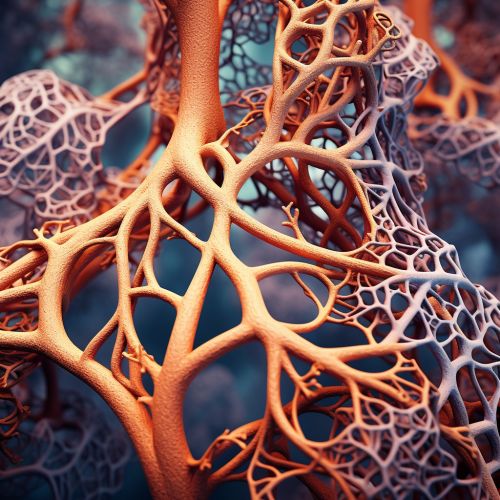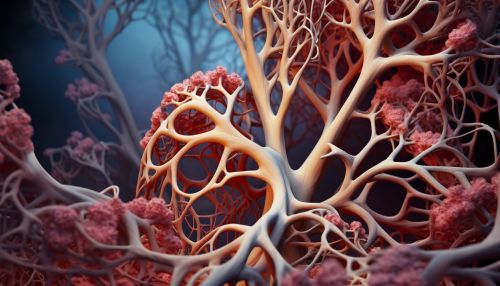Respiration (physiology)
Overview
Respiration in the context of physiology refers to the process by which living organisms inhale oxygen and exhale carbon dioxide. This process is essential for the survival of most organisms, as it allows for the exchange of gases necessary for cellular metabolism. The process of respiration can be divided into two main types: external respiration, which involves the exchange of gases between the organism and its environment, and internal respiration, which involves the exchange of gases between the cells of the organism and the blood.


External Respiration
External respiration, also known as pulmonary respiration, involves the exchange of gases between the atmosphere and the blood through the lungs. This process begins when air is inhaled into the lungs through the mouth or nose. The air then travels down the trachea, through the bronchi, and into the bronchioles, finally reaching the alveoli. The alveoli are small sacs surrounded by capillaries, where the exchange of gases takes place. Oxygen in the inhaled air diffuses across the thin walls of the alveoli and into the blood in the capillaries, while carbon dioxide in the blood diffuses into the alveoli to be exhaled.
Internal Respiration
Internal respiration, also known as cellular respiration, involves the exchange of gases between the blood and the cells of the body. Oxygen carried in the blood diffuses into the cells, where it is used in the process of metabolism to produce energy in the form of adenosine triphosphate (ATP). During this process, carbon dioxide is produced as a waste product and diffuses out of the cells and into the blood, where it is carried back to the lungs to be exhaled.
Mechanisms of Respiration
The process of respiration is controlled by the respiratory system, which includes the lungs, the diaphragm, and the muscles of the chest wall. The diaphragm and chest muscles contract to create a negative pressure within the chest cavity, causing air to be drawn into the lungs. When these muscles relax, the pressure within the chest cavity increases, forcing air out of the lungs.
The rate and depth of respiration are regulated by the respiratory center in the brainstem, which responds to changes in the levels of oxygen and carbon dioxide in the blood. When the levels of these gases are out of balance, the respiratory center sends signals to the respiratory muscles to adjust the rate and depth of breathing to restore the balance.
Disorders of Respiration
There are many disorders that can affect the process of respiration, including asthma, chronic obstructive pulmonary disease (COPD), and pneumonia. These disorders can cause symptoms such as shortness of breath, coughing, and wheezing, and can lead to serious complications if not properly managed.
